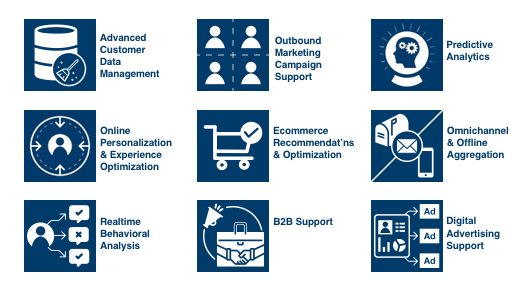Wolf Tales: Observations from the Road
January 21, 2019Luxury: the very word evokes images of elegance and extravagance, and an elite and posh lifestyle that all should aspire to. Well known designer brands such as Coach, Gucci, Rolex, Louis Vuitton, and others understand that the lure of the luxury lifestyle is at the heart of their appeal among their clientele. Those customers, in turn, expect white glove service and royal treatment with every interaction. They spend a lot of money on their brands and have very high standards for customer service and personalized communication. In today’s big data, multi-channel world, however, this lofty ideal of high-end red-carpet treatment is more wishful thinking than reality. The truth is that even the most expensive and exclusive retail brands struggle with their customer data, which is the foundation for the personalized treatment that these customers expect and demand.
Luxury brands often have difficulty using data for personalization. These traditional businesses, significantly rooted in an historic past, are now competing with savvier labels. Born in the analytical age, they inherently understand how to leverage such modern technologies as real time data, machine learning, and artificial intelligence.
We met a mix of these luxury brands at the Luxury Interactive event in New York in October. Much of the discussion there centered around the importance for marketing executives in luxury to think analytically and luxury-minded at the same time. Luxury is just now getting a feel for one-to-one marketing, which offers a significant mining potential to capture new luxury consumers, as well as to cross-sell and up-sell existing ones, all while maintaining their exclusive reputations.

The main issue preventing these brands from reaching this holy grail of white glove personalized attention revolves around the use of customer data for insight into shopping behavior, product affinity, and brand loyalty. The problem is not lack of customer data. On the contrary, like most retailers, luxury brands have been collecting voluminous amounts of customer data for years. Whether it’s through ecommerce transactions, brick and mortar stores, department store sales, catalogue orders, or even social media sites, these choice companies have vast amounts of customer data with which to mine unique insight into customer behavior.
Instead, the key is understanding the full picture of everything the customer has ever done regarding the brand. This becomes challenging because the various sources of data often don’t speak. The ecommerce data is usually in a different silo than the email marketing data, for instance. And both are separate from, say, the data showing customer service calls, or POS data from instore purchases. The bottom line is that without these disparate sources becoming unified, luxury brands will find it nearly impossible to understand the behavior of their clientele. Sure, they may know that a customer purchased a pair of shoes and a handbag, but will they also know that the customer had to call the customer service line because of a repair issue on the bag? Or that the same customer follows the brand on Pinterest? Do they have a sense of the customer’s external demographics?
Without this data unification, and the data cleansing that accompanies it, brands will be in the dark when it comes to a thorough understanding of customer behavior. This makes segmentation and messaging that much more inaccurate. This comes back to haunt the brand when they send a marketing campaign that purports to be personalized but misses the mark because of outdated or incomplete data. This results in luxury customers not feeling the individualized love and attention that they crave, and that the brands promise to deliver.
The good news is that, as evidenced by the conversations at Luxury Interactive, these exclusive brands recognize this shortfall and are trying to address the problem. The emergence of Customer Data Platforms (CDPs) is a potential light at the end of the tunnel. These platforms seamlessly integrate and unify ALL customer data (some like Zylotech even enrich this with third party data), making it much easier for brands to communicate to their high-end customers. This is crucial for all brands of course, but even more so for luxury retailers whose reputation means everything to them, and any misstep in marketing messaging or communication can be damaging to their brand image.
To conclude, even though in many ways luxury brands evoke an old-fashioned sort of elegance, they need more than ever to embrace the forward thinking methods of customer engagement. Today’s brand conscious luxury shopper demands it.


